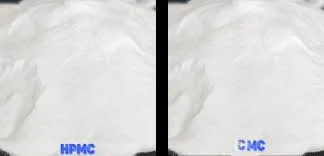
Dis . 11, 2024 09:52 Back to list
Understanding Hydroxypropyl Methyl Cellulose and Its Applications in Various Industries
What is Hydroxypropyl Methyl Cellulose?
Hydroxypropyl methyl cellulose (HPMC) is a versatile and widely used polymer that plays an essential role in various industries, ranging from pharmaceuticals to food and cosmetics. As a semi-synthetic derivative of cellulose, HPMC is produced through the modification of natural cellulose, which is derived from plant cell walls. This modification process imbues HPMC with distinct properties that make it a valuable additive in numerous applications.
Chemical Structure and Properties
The chemical structure of HPMC consists of hydroxypropyl and methyl groups that are etherified to a cellulose backbone. These modifications enhance the solubility and functionality of the cellulose molecule. HPMC is generally soluble in water, forming a gel-like substance when mixed with water, which allows it to be used in both aqueous and non-aqueous environments. Due to its hydrophilic nature, HPMC can retain moisture, making it an excellent thickening agent and film-former.
One of the key features of HPMC is its ability to form thick viscous solutions at low concentrations. The viscosity and gelation behavior of HPMC can be manipulated by adjusting the degrees of hydroxypropyl and methyl substitution, allowing for tailored applications across different industries. This versatility is one reason it has gained popularity in various formulations.
Applications in Pharmaceuticals
In the pharmaceutical industry, hydroxypropyl methyl cellulose is widely used as a binder, thickener, and controlled-release agent. It is often found in tablet formulations as it improves the flow properties and integrity of the mixture, ensuring consistent dosing. Its gelling properties aid in the formation of controlled-release systems, allowing for the gradual release of active pharmaceutical ingredients in the body. HPMC is also used as a coating agent, providing protection to sensitive ingredients and masking unpleasant tastes.
Moreover, HPMC is commonly employed in the production of ophthalmic solutions and eye drops due to its lubricating properties, which enhance the moisture content and comfort of these products. Its biocompatibility and non-toxic nature make it a suitable choice for various medical applications.
what is hydroxypropyl methyl cellulose

Role in Food Industry
In the food industry, HPMC serves multiple purposes, including thickening, stabilizing, emulsifying, and texturizing. It is often added to sauces, dressings, and baked goods to improve their texture and viscosity. HPMC is particularly useful in gluten-free products, where it helps mimic the texture and structure provided by gluten, enhancing the quality and palatability of such foods.
Moreover, being a non-caloric ingredient, HPMC offers a way to create lower-calorie food products without sacrificing texture or mouthfeel. Its ability to retain moisture also contributes to extending the shelf life of various food items, making it a valuable preservative agent.
Uses in Cosmetics and Personal Care
In the realm of cosmetics and personal care, hydroxypropyl methyl cellulose is utilized as a thickening agent in lotions, creams, and gels. Its film-forming properties allow it to provide a smooth, elegant feel to formulations, thereby enhancing the sensory experience for consumers. HPMC also acts as a stabilizer in emulsions, ensuring the consistency and performance of products such as shampoos and conditioners.
Additionally, HPMC is found in many skincare products due to its moisture-retaining ability, which helps keep the skin hydrated and supple. Its versatility extends to make-up items, where it can improve texture and application characteristics.
Conclusion
Hydroxypropyl methyl cellulose is a multifaceted polymer that serves vital roles across various industries. Its unique properties, including its ability to act as a thickener, binder, and stabilizer, make it an indispensable ingredient in pharmaceuticals, food products, and personal care items. As demand for innovative solutions continues to grow, the importance of HPMC and its derivatives will likely increase, solidifying its position as a crucial component in modern formulations. Whether in tablet form, a food product, or a cosmetic application, hydroxypropyl methyl cellulose is a prime example of how modified natural materials can meet the diverse needs of contemporary consumers.
-
Unlocking the Benefits of HPMC Products: A Gateway to Versatile Applications
NewsAug.07,2025
-
Unleashing the Potential of HPMC Ashland: A Comprehensive Look
NewsAug.07,2025
-
Tile Bonding Cellulose: The Key to Superior Adhesion and Durability
NewsAug.07,2025
-
Hydroxypropyl Methylcellulose Powder: The Versatile Component in Modern Pharmaceuticals
NewsAug.07,2025
-
Hydroxyethyl Cellulose: The Versatile Solution for Various Industries
NewsAug.07,2025
-
Hydroxyethyl Cellulose (HEC): The Versatile Polymer for Various Applications
NewsAug.07,2025







